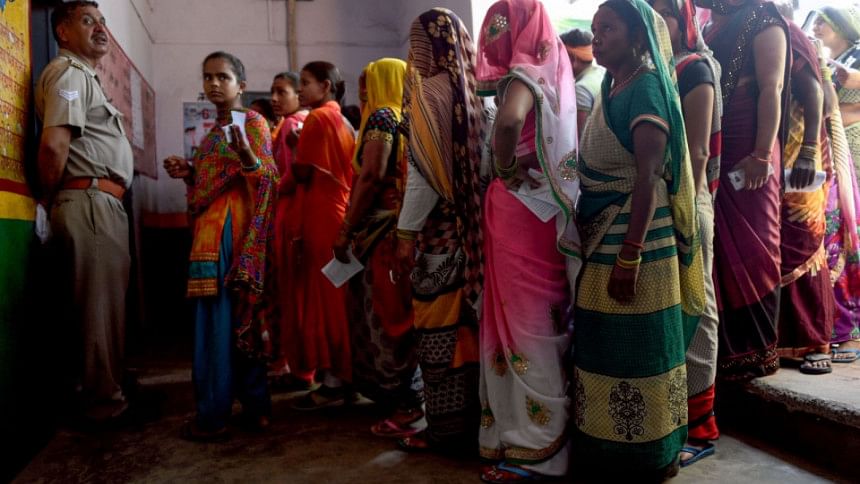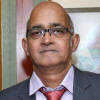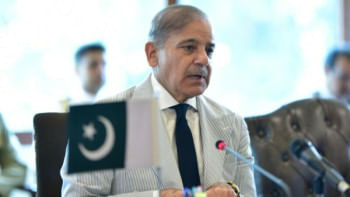What it takes to organise India’s national election

Trudging across the world's largest inhabited island (Majuli) on the Brahmaputra river in Assam for three days carrying EVMs, VVPAT units and other election materials, scaling rugged mountains in eastern Himalayas to reach just one voter in Arunachal Pradesh, walking through the deep snow to the world's highest battlefield Siachen Glacier, where oxygen is scarce, or risking Maoist ambush in a dense forest—these are just a few vignettes from the Indian parliamentary election, a mind-boggling exercise in the world's largest democracy, that aim to ensure that no eligible voter is left out. This is in sync with the foresight of the framers of the Indian Constitution who set up the Election Commission a day before the promulgation of India as a republic at the heart of which are the people and the universal right to vote. The message was unambiguous: every vote matters.
After the last votes have been cast in this edition of the election, on May 19, it is time to have a look at the efforts that go behind the conduct of the franchise exercise on such a scale. Months of planning, mobilising resources and establishing coordination among a plethora of state governments and the federal administration. From just 170 million voters with 200,000 polling stations in 1952, when India had its first parliamentary election, to more than 910 million electors and over one million polling stations in 2019—the Indian democracy has come a long way, silencing those who were sceptical if a newly-independent country can manage democracy. Adoption and adaptation of technology as embraced by the Election Commission of India has helped manage the gigantic electoral process, making it one of the largest management exercises in the world. But that is only a part of the story. What is fascinating is the human involvement behind the poll.
During the entire election process this year, India has ferried more than 2.5 lakh security personnel using helicopters, trains and other vehicles, hundreds of horses and mules as well as boats and ships at an estimated cost of more than Rs 200 crore as part of the logistics for the election. The key players in poll management—the Home Ministry, the Election Commission, the Central Reserve Police Force (CRPF) and different state governments—have had multiple brainstorming sessions firming up the final plan and finetuning them. The EC remains the supreme body for organising the election, beginning from deciding the poll schedule to allocation of resources and coordinating various government departments. The home ministry provides the security forces in consultation with the EC and ties up with other ministries such as railways and state governments for movement of forces across a diverse topography. The CRPF is the nodal force coordinating deployment and movement of all other forces, including states' police, on election duty.
The first challenge for the EC is zeroing in on the election dates, factoring in the fact that every state has its own religious practices and so the dates should not clash with them. Secondly, the EC has to take into account the school examination schedule as most of the polling booths are set up in schools and their teachers are engaged in poll-related work.
The CEC and ECs, all of whom are retired senior bureaucrats, are appointed by the President of India to a tenure of six years, or up to the age of 65 years, whichever is earlier. They enjoy the same status and receive the same salary and perks as judges of the Supreme Court. The Election Commission of India derives its authority from Article 324 of the Constitution which states that the powers of "superintendence, direction and control of elections" are to be vested in an Election Commission. The Constitution does not, however, stipulate the size of the commission. Article 324(2) only says that "the Election Commission shall consist of the Chief Election Commissioner and such number of other Election Commissioners, if any, as the President may from time to time fix."
Initially, the Election Commission of India consisted of just the Chief Election Commissioner. However, on October 16, 1989, the Congress government of Prime Minister Rajiv Gandhi appointed two more Election Commissioners, making the commission a broad-based body just before the national election, a move that came under fire from opposition parties who saw it as an attempt to undermine the independence of the Election Commission. The then CEC RVS Peri Sastri challenged the government action in the Supreme Court which rejected his plea, saying that more than one head is better in a constitutional body. However, on January 2, 1990, the National Front government of Prime Minister VP Singh changed the rules and reverted the commission to a single-member body. On October 1, 1993, the Congress government of Prime Minister PV Narasimha Rao restored the provision of two more Election Commissioners. The office of the Chief Election Commissioner is assisted by Chief Electoral Officers in various states and federally-administered territories; all of them are senior bureaucrats.
Besides organising the logistics for the election, the EC also keeps a tab on the use of muscle and money power by parties and candidates and the violation of the model code of conduct and other electoral laws through their actions and utterances during campaigning. Recently, the EC came out with a c-Vigil Application that seeks to empower the citizens to report instances of violations of the model code of conduct for poll and play a critical role in the entire electoral process. To stop abuse of money power in elections, which is widely recognised as the greatest challenge faced by both established and emerging democracies across the world, the Indian EC has made elaborate arrangements for effective implementation of an election expenditure monitoring mechanism—deployment of general, police and expenditure observers as micro-observers to ensure the sanctity of the electoral process.
Notwithstanding the by-and-large free and fair elections organised by the Election Commission, the poll body has often come under criticism for being "biased" and turning a blind eye to irregularities and violations of the poll laws and the model code of conduct. The 2019 general election was no exception. But overall, the EC's conduct has been beyond reproach, and parties have always accepted the conduct of the poll and its mandate.
However, the Indian democracy does have its share of flaws like the use of muscle and money power, presence of candidates with criminal cases, and inadequate representation of women in the parties' choice of nominees. Just look at the figures in the just-concluded election—the Election Commission seized Rs 3,439 crore of cash, more than double that it had confiscated in 2014 (Rs 1200.25 crore), meant for distribution among voters. In fact, the use of money power led to cancellation of polling in Vellore constituency in the state of Tamil Nadu.
The proportion of candidates with criminal and serious criminal cases against them in the 2019 parliamentary election has shown an upward trend, according to a report by election watchdog Association for Democratic Reforms (ADR). The report, based on an analysis of the mandatory affidavits filed by the candidates with the Election Commission, says that 19 percent of the over 8,000 candidates contesting the 2019 general election have declared pending criminal cases against them. Now, compare this to 17 percent in 2014 and 15 percent in 2009. Similarly, 13 percent of the candidates in this year's polls have declared serious criminal cases against them as opposed to 11 percent in 2014 and eight percent in 2009, says the report.
A mere 711 of the total 8,048 people who contested this year's national election are women. That works out to 8.8 percent, according to a study done by Gilles Verniers, a professor of Ashoka University. This is a sad reflection of the participation of women in the electoral contests even though the number of female voters in this year's election touched an all-time high closing the gender gap in turnout, as per the Election Commission's update on the night of May 19, soon after the final phase of polling. The difference between the male and female voters narrowed from 9 percent five years ago to 0.4 percent this year, said Deputy Election Commissioner Umesh Sinha. In fact, the number of women voters was more than that of men in nine states, including West Bengal and federally-administered territories.
Pallab Bhattacharya is a special correspondent for The Daily Star.

 For all latest news, follow The Daily Star's Google News channel.
For all latest news, follow The Daily Star's Google News channel. 



Comments